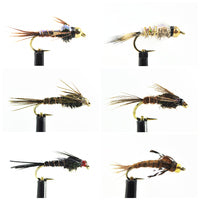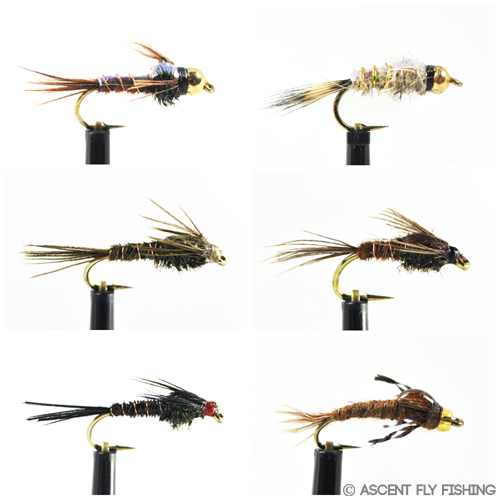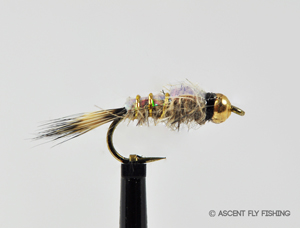
Fly Selection 101: Introducing The GENERALIST FLY Patterns
A perennial complaint that I have heard from customers over the years is their inability to remember the names of their flies, what invertebrates they represent, and when to use each. We have all at one time or another visited the local fly shop to pick up "must have patterns" only to add them to an already overstuffed and disorganized fly box. With tens of thousands of fly patterns on the market, which ones do we really need? While there are no "silver bullets" guaranteed to always catch fish, the overarching family of patterns called Generalists is the closest thing to it.
Encompassing roughly 30% of dry patterns and 50% of wet patterns, the Generalists are the renaissance men of the fly world. Generalists can be defined as patterns that are "close enough" in size and color that they can be effectively used to match a number of invertebrate species on or in the water during any given season.
To the chagrin of bug geeks such as myself, trout do not speak Latin and are more concerned with the profile, size, and color of fly patterns than counting the number of tails on your mayfly and stonefly imitations to classify the species. It is for this reason that a size 18 pheasant tail nymph can be used to effectively match a Blue Wing Olive Mayfly nymph in the spring, while a size 10 of the same pattern can be used to match the Skwala stonefly nymph on the same water.
Whether you are just starting to get your feet wet or if you are a seasoned fly angler, keeping your fly box stocked with a healthy supply of generalists in a variety of sizes will insure that you have flies that will produce year-round, regardless of the water. Below is my list of one dozen generalist patterns that cover the greatest number of hatches on North American waters:
Sizes:14-24
Colors: Black, Tan, Gray, Olive, Wine
Imitates: Midge & Chironomid Pupa, & Mayfly Nymphs
Sizes: 18 - 24
Imitates: Midge Larva
Sizes: 10 - 22
Imitates: Mayfly, Stonefly, & Damselfly Nymphs
Sizes: 10 - 22
Colors: Tan, Olive
Imitates: Mayfly, Stonefly, & Damselfly Nymphs
Size: 8 - 12
Colors: Yellow, Brown, Black
Imitates: Stonefly Nymphs
Sizes: 6 - 12
Colors: Black, Rust, Olive
Imitates: Bait Fish, Leeches, & Crawfish
Sizes: 18 - 22
Colors: Peacock, Olive, Blonde
Imitates: Adult Midges & Chironomids
Sizes: 10 - 24
Imitates: Adult Mayflies & Midges
Sizes: 12 - 20
Imitates: Adult Mayflies & Midges
Sizes: 8 - 20
Colors: Olive, Tan, Grey, Black
Imitates: Caddis & Small Stoneflies
Sizes: 6 - 18
Colors: Yellow, Orange, Olive, Peacock
Imitates: Adult Stoneflies & Large Caddis Flies
Sizes: 8 - 16
Colors: Tan, Olive
Imitates: Grasshoppers, Beetles, & Adult Stoneflies
Now is the time to restock your fly boxes with these tried and true patterns! As you hit the water this new year, use Generalist patterns to get close in size and color to the invertebrates you see on the water and get ready for the strike!















